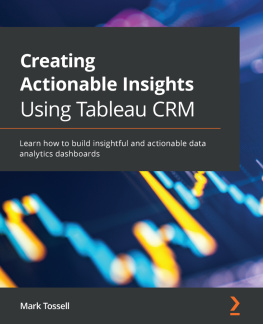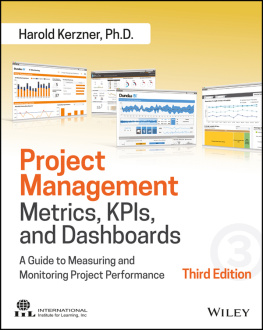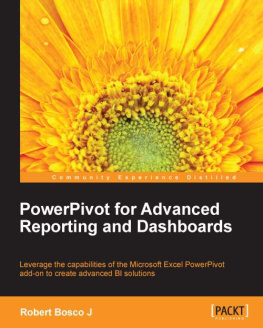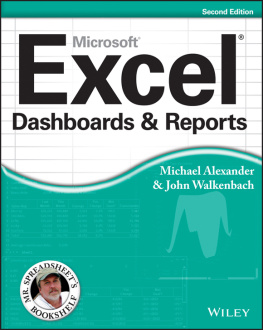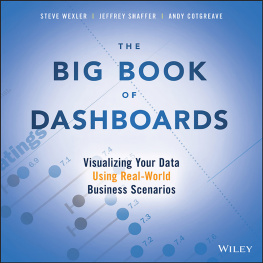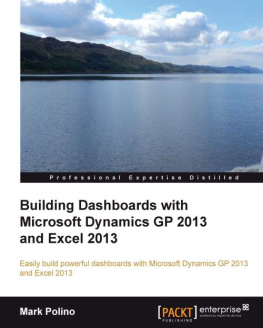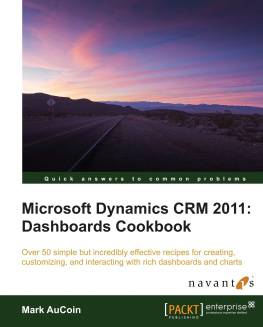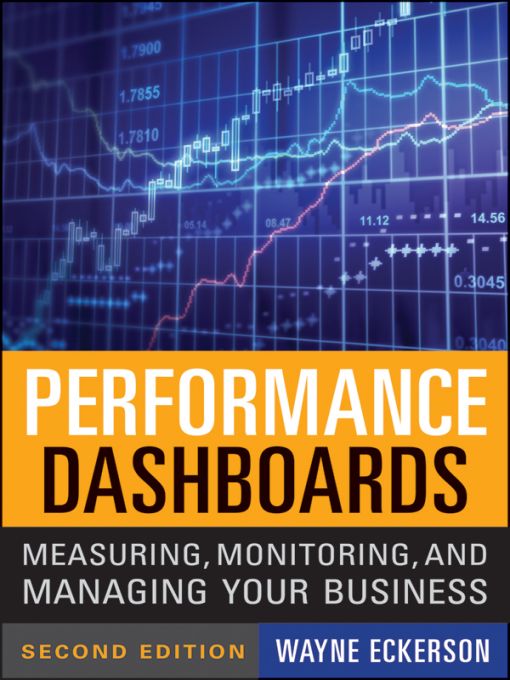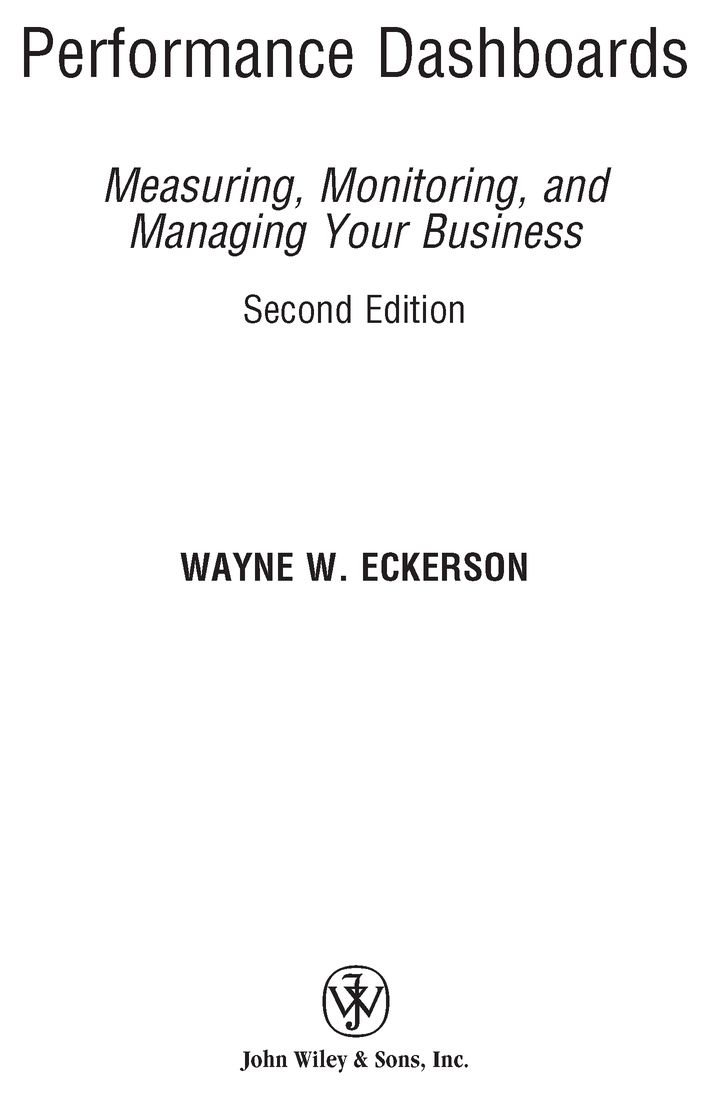Table of Contents
To my wife, Christina, and my children, Henry and Olivia,
who are the light of my life.
Foreword
The Power of FOCUS Over the past several decades we all have been trying to use information through technology to optimize our businesses and make our lives easier. So why have so many businesses failed and why do most organizations continue to struggle to find that competitive advantage that will take them to the next level? If you are interested in finding a sustainable solution that will help you look forward to where your business should be heading versus only looking backward at where you have been, you need to look through Waynes Organization Magnifying Glass to help you focus on the future.
Whether you are just starting your career or have been in this industry for as long as I have, this book will take you on a thought-provoking journey and offer you many techniques that Wayne has gleaned for some of the best practitioners in the field on delivering real and sustainable value from your information. I have sold to, consulted with, and provided education to hundreds of organizations over the past 25 years and almost all of them struggled with putting all of the pieces of this puzzle together. As we move into the next decade and try to find our way in this new economy, we are quickly realizing that business as usual no longer applies. Businesses are facing a new global economic environment. If our businesses are to survive, we must figure it out quickly.
Waynes approach and ideas to get the entire organizationboth business and ITto collaborate on a proven approach to performance management make this a must-have survival guide for your business.
Corporate executives, business executives, and IT executives, you must at a minimum, read Chapter 1 and Chapter 5, proactively commit to being an agent of organizational change, set a clear direction, and give a copy of this book to all of your team members.
Department staff members, you should read this cover to cover, mark Chapters 1 and 5, ask your executive sponsors to read them, and work on developing a real partnership across your organization.
If you are just getting out of college or starting your career, this book will serve you well as a best practice guide to designing and delivering actionable analytic solutions and will greatly increase your personal market value.
This book will help you put the pieces of the puzzle together with an organized and systematic strategy that will position you to take full advantage of whatever opportunities lie ahead.
Paul Kautza
Director of Education
The Data Warehousing Institute
Preface to the Second Edition
New and Different
A lot has changed since I wrote the original manuscript for this book in 2004. The book hit a sweet spot in a rapidly changing industry. Many organizations had discoveredindependently of the products vendors were selling to themthat dashboards resonated with users and were a perfect way to deliver information to the masses. People snapped up the first edition and used itmuch to my surpriseas a conceptual manual for how to implement a performance dashboard. Although I strove to add as much prescriptive advice as I could based on many conversations with practitioners in the field, I didnt have a methodology in mind when I wrote the book.
Given the books success, my editor, Tim Burgard, needled me for several years to write a second edition or sequel. Work and personal commitments prevented me from acceding to his requests. But I finally relented in 2009. Only after I signed the contract and started outlining changes did I realize how much work I had taken on. So much had changed in the intervening five years that I realized I would basically have to rewrite large swaths of the book.
Thankfully, the framework that I outlined in Chapter 1 has stood the test of the time and remains basically intact. The only major change is that I have given the framework a name. Its now known as the MAD framework, which stands for Monitor, Analyze, and Drill to Detail. The name is a conglomeration of two of the three threes, which describe the prominent characteristics of a bona fide performance dashboard.
However, almost everything else has changed or advanced. While I was a pioneer in discussing performance dashboards in 2004, Ive been joined by a host of other folks, many more intelligent and informed than I am. I have leaned on them heavily, and sometimes shamelessly, to produce this second edition.
First, Ive replaced the featured case studies in Part II with new ones. And instead of one case study per chapter and type of dashboard, I profiled two. There is so much variation among performance dashboards that I felt it important to cast as wide a net as possible when examining actual implementations. Ive also created subtypes of dashboards. For example, Ive defined detect and respond and incent and motivate operational dashboards. I also defined a new type of tactical dashboard that I call a mashboard, which enables power users to create ad hoc dashboards from predefined report elements created with a vendors business intelligence (BI) tool. Ive also defined a new type of strategic dashboard that features many characteristics of a Balanced Scorecard but isnt one.
In Part I, I combined the chapters on business intelligence and performance management, since this is background information that most readers are familiar with. I rewrote much of the chapter on technical readiness, which delves in my BI Maturity Model. The new chapter offers a more comprehensive and logical handling of the subject. I also moved the chapter How to Align Business and IT, which proved to be one of the most popular chapters in the book, to the anchor position in Part I.
I extensively rewrote all the chapters in Part III and added Chapter 13, How to Architect a Performance Dashboard, which discusses how to engineer the front-end interface for optimal performance and examines the pros and cons of eight architectural options. The chapters How to Create Effective Performance Metrics and How to Design Effective Dashboard Displays are almost entirely new, and Im confident they offer practical advice for newcomers and veterans alike.
Sections in the Book
The book is divided into three sections. Part I, The Landscape for Performance Dashboards, provides the framework and context for understanding performance dashboards. Chapter 1 defines performance dashboards and describes their primary characteristics. Chapter 2 provides background on business performance management (BPM) and business intelligence and how they factor into the design and creation of performance dashboards. Chapter 3 provides an organizational readiness assessment for organizations preparing to implement a performance dashboard, and Chapter 4 offers a technical readiness assessment based on a BI Maturity Model that I developed in 2004 and which has been well received by BI professionals and their business counterparts. Chapter 5 tackles the thorny topic of how to establish an effective partnership between business and the information technology (IT) department, which is required to deliver a long-lasting, high-value dashboard system.
Part II, entitled Performance Dashboards in Action, adds flesh to the conceptual framework defined in Part I by examining six case studies in depth, two for each type of performance dashboard. Chapter 6 compares the three types of performance dashboards and explains the major characteristics of each in detail. Chapter 7 examines operational dashboards at 1-800 CONTACTS and the Richmond Police Department. Chapter 8 looks at tactical dashboards at Rohm and Haas and Arizona State University. Chapter 9 examines strategic dashboards at Cisco and the Ministry of Works in the Kingdom of Bahrain.


